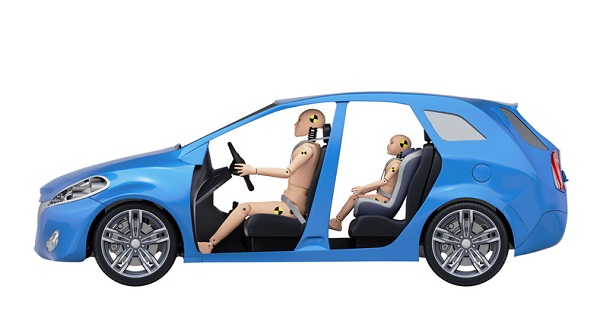How Crash Testing Works, Explained for Students in Auto Mechanic School

You’ve seen it in car ads all the time, but how does it actually work? Crash testing is a standard procedure to ensure safety and minimize the injuries one can sustain in a car accident when various car models are about to be launched. How does the process come together? And why do we still need it after all these years and after so much evolution in the automotive industry?
Here’s a small crash course (no pun intended) in how this form of testing works if you’re currently studying to become an auto mechanic.
Grads of Auto Mechanic School Might Know Tests Are Done to Various Sides of the Vehicle
Although many visual examples of crash tests you’ve seen in the past tend to involve the car crashing right into a concrete wall in a forward motion, frontal-impact testing is only a portion of the crash testing performed on the vehicle.
Aside from being propelled frontwards into barriers, cars are also subjected to side-impact testing (where a vehicle stands still while a barrier crashes into its side, crumpling it) and rollover testing (which is a test largely for the pillars that keep the roof in place, and evaluate the top-heaviness of the vehicle).
Sometimes, testing will also be done to see how the car responds to crashing into a pole or tree (small overlap tests); or there can be “old versus new” tests, where two generations of the same model can be tested against one another to demonstrate the evolution in crashworthiness between the two cars. Together, all of this testing helps make cars into the safe vehicles you will come across after automotive mechanics school.

They Test the Likelihood of a Fire Without Actually Starting One
During a crash simulation, testers can also see how likely a vehicle is to catch fire as a result of a collision, while making sure a fire doesn’t actually occur in the process. How do they do this? By draining electrolytes from the car’s batteries and replacing the gas in the tank with a testing solution.
Based on how much of the solution spills out of the vehicle, testers can evaluate the odds of the vehicle setting fire post-crash in real life. Since modern EV (electric vehicle) batteries can also pose safety hazards, and battery packs are easily combustible after crashing, battery testing can also be performed.

The Dummy’s Sensors Help Decide the Government’s Safety Ratings for the Cars
We all know a dummy is used in a crash test, but one thing you might not have already known is that the dummies come equipped with sensors that obtain data. In addition to accelerometers meant to determine the likelihood of injury based on speed, load and motion sensors are also placed inside the dummy—the former to determine how much force goes against different parts of the body, and the latter being placed in the chest of the dummy to measure the driver’s chest deflection.
In an age where deaths and injuries from car accidents are still at high levels, these sensors—and the many measurements of potential damage recorded from them—are a very useful tool in helping mitigate that number of casualties and ensuring the vehicle’s overall safety. You’ll still need to learn how to repair damaged vehicles in auto mechanic school, but they’re a huge help nonetheless, and they also assist governments in giving safety ratings to the vehicles.
Are you looking to enroll in auto mechanic training school?
Contact CATI for more info!
